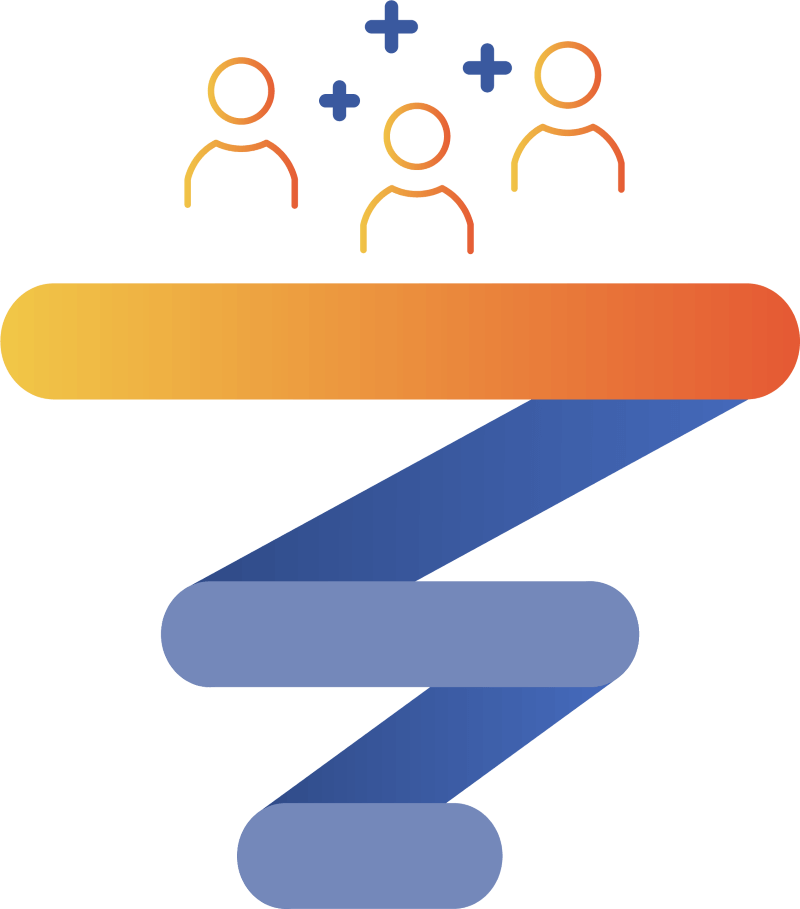Before you dive into various sales funnel points in this program, be sure you’re familiar with fundamental concepts we’ll use across funnels.
We’ll cover critical vocabulary and frameworks that are applicable across multiple courses further along in this series.
Throughout these courses, we’ll use a sales funnel model with three stages, top, middle, and bottom to keep us oriented as get better and turning complete strangers into paying customers.
We’ll use audience<>value proposition pairs to define our strangers and what we think they’ll buy.
People who look similar and will use our product or service in a similar way will be grouped into audiences.
The way that particular audience uses our product or service will be defined as that audience’s value proposition.
We’ll also dive into the difference between selling unknown products/services versus known solutions.
Strangers
When developing sales funnels, the degree to which strangers understand that they have a problem and what the name or category name of the product/service that alleviates the pain is matters. Even as a new brand, you can land customers faster when the category is known.

Unknown/Unrecognized Pain Point & Solution
This type of funnel requires first educating prospects about the problem and solution AND THEN why your product or service is the right choice and will deliver the value needed on an appropriate timeline and budget.
Examples:
A company establishes a new class of software.
New laws emerge and the accounting or legal services to navigate them must be developed.
Known Paint Point & Solution
Being a fast follower is often a much more cost-effective way to go to market. Someone else has already educated the market and established the product category.
Examples:
While there were earlier electric vehicles, Tesla (Roadster, Model S) and Nissan (Leaf) did most of the heavy lifting to get the general public aware and comfortable with owning electric cars as an alternative to internal combustion-based vehicles.
Friendster, High-5, MySpace, and many others built social networks before Facebook. Facebook’s locked down approach to styling and exclusive feel (in the early days) allowed it to position off of those early products and seize massive market share.
Based on the market’s understanding of the product category, go to market strategy will have to be appropriate.
Tops of Funnels
Tops of funnels are where a business can find strangers and attempt to “get them into its funnel” by first getting attention, then interest, understanding, etc.
Note: When talking about different funnels, the top of funnel is usually what is used to name it even though there may be multiple middle and bottom of funnel components as well: “SEO Funnel,” “PPC Funnel,” etc.
Popular tops of funnels for B2B products and services include:
- Organic search – Getting to the top of Google search results so that people click over to a website to learn about your solution.
- Paid search – Paying for ads that appear near the top of search engines and send clickers to a website.
- Organic social – Putting out posts that get seen by strangers and induce them to visit a website (or sometimes make a purchase within the social platform).
- Paid social – Distributing posts and ads that reach non-connections with calls to action to visit a website.
- Account-based marketing – “Outbound” marketing includes identifying specific people at specific companies and sending them communications via various channels.
- Distribution Partnerships – Businesses may leverage sales funnels developed by others meet strangers: app stores, review sites, other.
- Print Media – Buying ads in broader circulation periodicals or signage or in targeted places such as trade journals.
- Referrals – Businesses that provide great products or services often receive free recommendations from existing clients.
Middle of Funnel
In B2B, most funnels flow through a website but there exceptions and other tools that can accelerate a prospects journey through the middle of the funnel to becoming a customer.
- Website – A place to learn more about a company and explore its offerings in detail.
- Newsletter – For potential future clients, a newsletter is a nice way to learn more over a period of time and stay up to date until a purchase makes sense.
- Chat – A way for clients to ask questions before moving further down the funnel.
- Gated content – A way for businesses to give away something like a white paper or video in exchange for contact information (usually an email address).
- Scheduler – A tool that allows a prospect to book a meeting at their convenience.
- Deanonymizer tool – A way for US-based businesses to see who has visited their website even if they don’t submit a form.
- App Store Profile – For digital products, an app profile on Google’s Play Store or Apple’s App Store works just like a website. Larger platforms like HubSpot and SalesForce also have their own app stores.
- Review Site – Yelp, Tripadvisor, etc. provide ways to get to know a business that might result in a purchase without actually visiting a website.
Bottom of Funnel
Since this a B2B course, we’ll primarily focus on closing business on “big ticket” and “small ticket” products and services.
- Big ticket – Big ticket purchases often involve one or multiple conversations and might include quotes, proposals, contracts, or types of custom or semi-custom documentation to determine exactly what is being purchased and the payment terms, which can sometimes be financing.
- Small ticket – Simpler less risky products generally sell via free trial to paid conversion or are small enough that one can be consumed before committing to buying more. These often require a human conversation to close.
Customers
The purpose of sales funnels is to convert strangers into customers. Customers pay for goods or services.
The revenue on those purchases goes back into the company to cover costs of production, sales, and marketing, leaving profit…some of which can then be reinvested in funnel expansion and/or launching new funnels.

Once you’ve taken all of the courses in this B2B course bundle, you’ll have a great understanding of:
- What your various funnels options are
- Which funnels make sense for your company at its current stage
- What funnels to develop in what order
- What a functional funnel looks like versus a broken funnel
- The tools and skills necessary to execute each funnel point correctly
And then hopefully you’ll put your newfound skills to work building 7 and 8-figure sales funnels in less than a year and achieving the growth your company to desires on the desired schedule.

